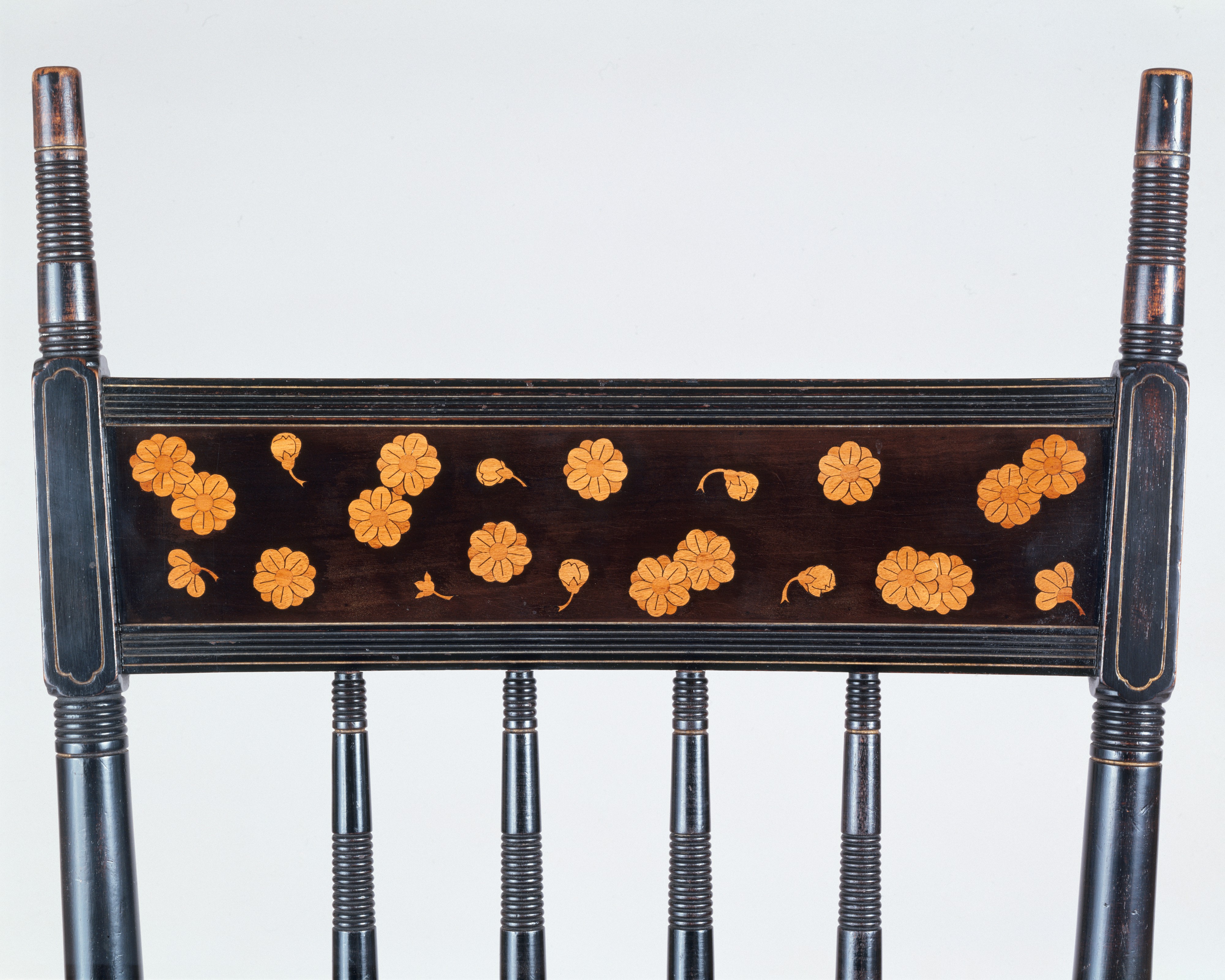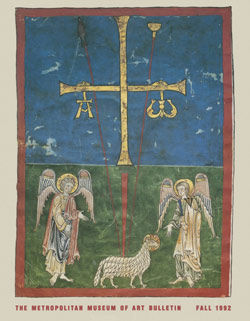Chair
Herter Brothers American
The slender proportions and attenuated stiles of this chair proclaim an awareness of progressive British art furniture, especially that of E. W. Godwin (1833-1886), the British architect and originator of the so-called Anglo-Japanese style. It is often compared with a similar chair designed by H. W. Batley (1846-1932) and displayed by the British firm Collinson & Lock at the Philadelphia Centennial Exhibition of 1876. Herter Brothers' interpretation, with a panel of carved flowers across the back and floating blossoms in marquetry on the crest rail, is distinctly its own, however. Lightweight and linear in conception, ebonized to allude to Japanese lacquer, with ring-turned legs, repeated spindles, and elongated uprights, these chairs abstain from specific European historical references in favor of a new aesthetic derived, at least in spirit, from Japanese decorative arts and architecture. Ebonized chairs such as this were typically made in pairs by the firm for use in conjunction with bedroom suites. The mate to this chair is in the collection of the Museum of Fine Arts, Houston. The showcover is a replacement and replicates documented fabric designed by Bruce J. Talbert.
Due to rights restrictions, this image cannot be enlarged, viewed at full screen, or downloaded.
This artwork is meant to be viewed from right to left. Scroll left to view more.




